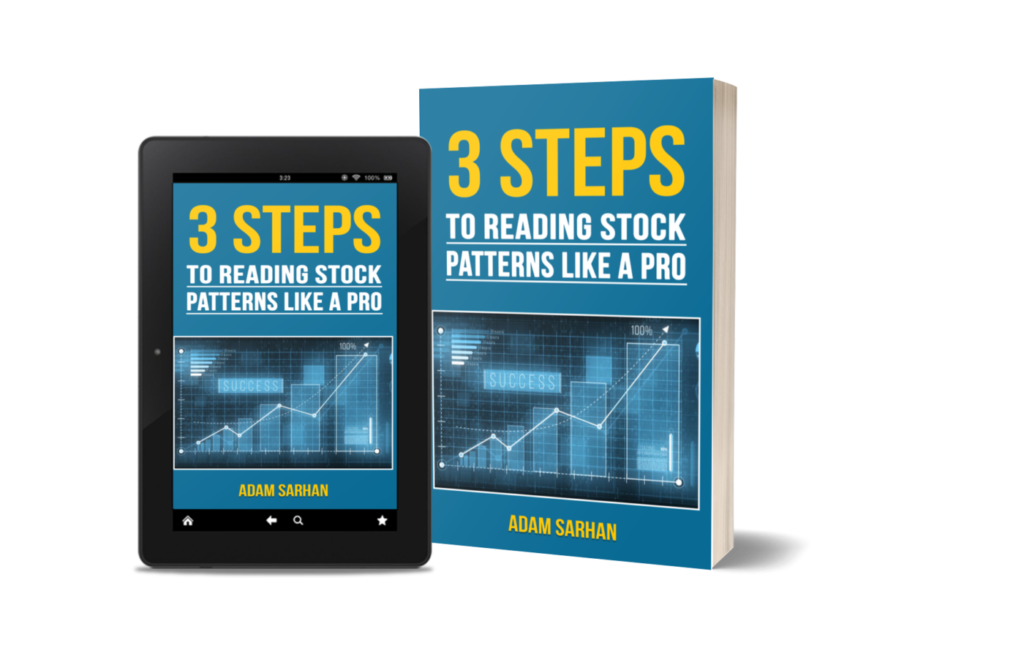Today you will learn not only How to Build a Universe List but also about the vital role they play in our trading and how they can even help us assess the overall State of the Market.
In this article we are going to discuss:
- How we build our Universe, what it’s made of, and the importance of doing it consistently
- How the Universe helps us determine the overall State of the Market and whether or not we should be stepping on the gas or hitting the brakes. Insights include:
- Expansion/Contraction of the Universe as a whole
- Sector Rotation
- Leading/Lagging Sectors
- Leading Stocks in Leading Sectors
- Leading Stocks in Expanding Sectors
- Advance/Decline
- Average Gain/Loss
Building Our Universe, What It’s Made Of, and Doing it Consistently
Some Background:
 The ChartYourTrade Universe began simply as a list of every stock that we were interested in potentially trading. We created this list once and from there have continuously added to and pruned it on a weekly basis over the past several years. We didn’t know it at the time, but there was a wealth of information to be had from the Universe list far beyond a compilation of the stocks we wanted to trade. It has truly become a major ingredient in the secret sauce of our analysis.
The ChartYourTrade Universe began simply as a list of every stock that we were interested in potentially trading. We created this list once and from there have continuously added to and pruned it on a weekly basis over the past several years. We didn’t know it at the time, but there was a wealth of information to be had from the Universe list far beyond a compilation of the stocks we wanted to trade. It has truly become a major ingredient in the secret sauce of our analysis.
Maintaining the list weekly became essential. It started out as a habit (a good one) and part of our routine. From this weekly maintenance, we eventually noticed that by looking at the Universe as a whole, we were able to obtain deeper insights into the market’s health, rotation, leadership, etc… We began to use these measurements vs the action on the major indexes each week. What we discovered was that when the elements in the Universe and the indexes were in sync, the market would be more likely to trend be it higher or lower. When they diverged, we would see sideways action until the divergence was resolved. This could last anywhere from weeks to months. The market doesn’t trade in a vacuum. There are multiple moving pieces to the market and a deeper dive into our own Universe provided key insights to understanding the whole.
Building the Universe
Probably 95% of stocks on the Universe list got there by passing our scans (for more on how we scan, read our post on “How to Scan for the Best Growth Stocks”). The other 5% are comprised of stocks we are interested in due to its story, technicals, leadership,etc… but fails our scans. The list generally runs anywhere between 150-200 stocks week to week. For a variety of reasons that will become clear in a moment if they aren’t already, it’s important to keep the stocks on our Universe List that do not pass our scans to a minimum.
We are much stricter about adding stocks to our Universe than we are when removing them. When we add stocks to our Universe, they need to pass multiple scans, as well as an “Ideal Growth Screen” (see our post on ‘How to Scan for the Best Growth Stocks’). If a stock is strong enough to jump through all these hoops, we don’t want remove it prematurely even if it isn’t quite ready to be traded. We want it to be failing the “Ideal Growth Screen” by about 40-45% OR to be breaking down technically (such as breaking sharply below its 200dma). Being looser when it comes to kicking stocks out of the Universe helps us catch some beaten but not broken leaders early.
Building your own Universe is easy and includes the following steps:
- Determine the parameters a stock must possess in order to be included in your Universe list.
- Create a list of stocks you’re interested in based on the above. If you can create your Universe based primarily on a predetermined set of scans, it will make the list far more valuable as a gauge of market health.
- Carry this list forward each week and add to/prune it weekly. Once you get the hang of it, it shouldn’t take more than 20-30min on a weekend. Consistency is imperative to having an accurate gauge of market health.
How the Universe helps us determine the overall health of the market
[su_rectangle_ad_left] Our Universe List (and by extension our Ready Lists) serve far greater roles than simply being a list of stocks. By managing these lists consistently, we are able to identify underlying factors for market health, breadth, sector rotation, leading/lagging sectors, and overall performance. To do this yourself, a basic knowledge of Excel that includes working with pivot tables and creating charts is necessary. We’ve included a step by step process to assist you in creating this, click here to view How to Create Pivot Tables.
As we compile data from our Universe, running these simple pivot tables and charts allows us to see movement inside our Universe. Monitoring these movements allowed us to find early expansion in the Energy sector in 2013, the Medical Sector in 2014 and 2015, and Social Media in 2014. It helped give us the nerve to stick with several leading stocks in the first half of 2015 and provided the insight that had us move to cash 3 weeks before the market crashed in August 2015.
- Expansion/Contraction: as mentioned earlier, it takes a lot for a stock to make it into our Universe and it takes a lot for it to get kicked out of the Universe once it’s there. This allows the size of the Universe to act as a gauge of the market’s health. As it expands, it’s a sign that conditions are improving and when it contracts it’s a sign that conditions are deteriorating. When we track the size over time we can see trends develop in the expansion/contraction of the Universe. Prior to the market’s crash in August 2015, our Universe began contracting starting in June 2015. Like all signs and signals, this is just one of several and needs to be taken into context along with all of the other signs and signals we analyze.
- Sector Rotation: within our own Universe we’ll see expansions and contractions among sectors week to week. As more and more stocks from a particular sector make it onto our Universe List, it is an indication that they are passing our scans and are therefore showing elements of strength. When we see this kind of growth in a sector, it highlights strength building within that sector. Stocks often travel in packs. When we see certain sectors consistently expanding, it’s worth paying closer attention to these sectors for new leadership. The same can be said for highlighting weakness when we see sectors consistently contracting.
- Leading/Lagging Sectors: here we look at the percentage change YTD among our sectors. This percentage is effected in two major ways. First, and most obvious, is by the performance of the stocks within the sector. Second and perhaps of even greater importance is by the addition/deletion of stocks from the sector. We add to and prune our Universe weekly. This effects the percentage change YTD for that sector for the week. This makes the percentage change YTD a far more sensitive indicator. If several new leaders are added and we see a sudden pop in a sector, it’ll be on our radars. If a couple of laggards are dragging a sector down and we remove them, it’s possible the sector may look much better after removing those bad apples. Viewing leading and lagging sectors in this way helps us keep our finger on the pulse of the market and changes as they occur.
- Leading Stocks in Leading Sectors: once we know which sectors are leading, we’ll highlight the strongest stocks within those sectors. Ideally, those are some of the stocks we are trading. If not, this helps keep the strongest stocks in the market on our radars for when a valid entry point appears.
- Leading Stocks in Expanding Sectors: similar to leading stock in leading sectors, there is strength and new leadership to be found among leading stocks in expanding sectors. Once we know which sectors are expanding, we’ll highlight the leaders by greatest percentage change YTD within those sectors. When a sector is early in its move and is expanding, this is often a great way to catch leaders early.
- Advance/Decline: our Universe contains leading stocks and week to week we’ll track the number of stocks advancing in the Universe and the number of stocks declining. Similar to monitoring the expansion/contraction of the Universe, monitoring the Advance/Decline of the Universe provides early signals of changing market conditions.
- Average Gain/Loss: tracking the average gain/loss of the stocks in our Universe provides us with our own composite index. It tells us how the stocks we trade performed for the week, how they performed vs the major indexes, relative strength vs the indexes, allows us to compare the stocks we’re holding vs the composite, and allows us to view trends overtime.
Thanks for taking the time to read this post and we hope that you will find enjoyment and success in creating your own Universe. If you enjoyed this article, please share it by clicking one of the sharing options below. Archives of the ChartYourTrade Universe along with all of the detail mentioned above and more is available by clicking here.


